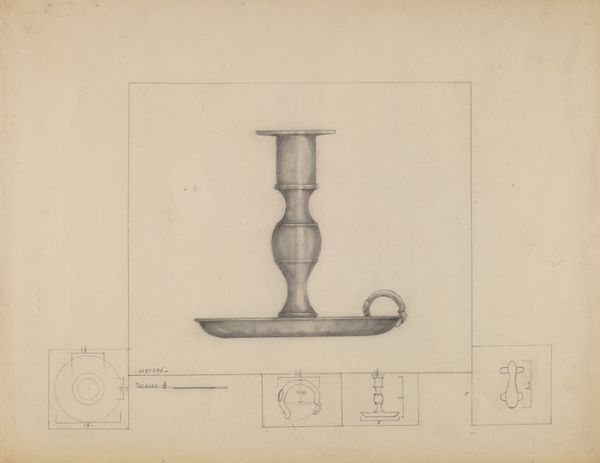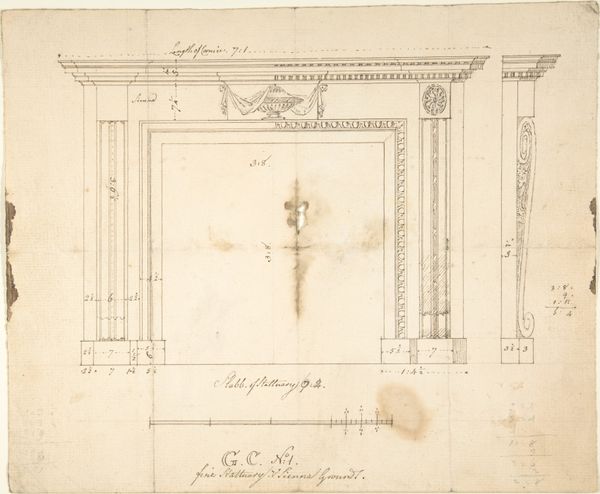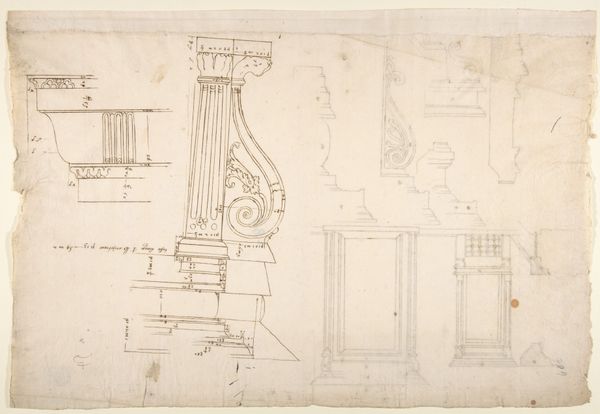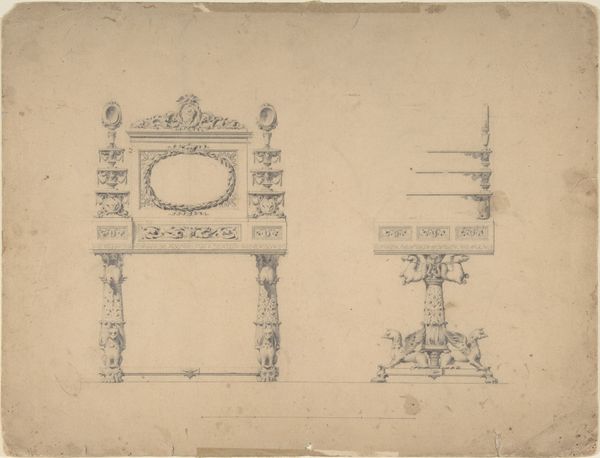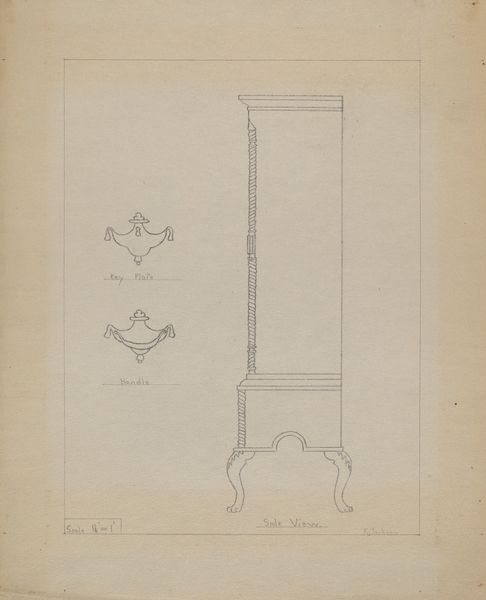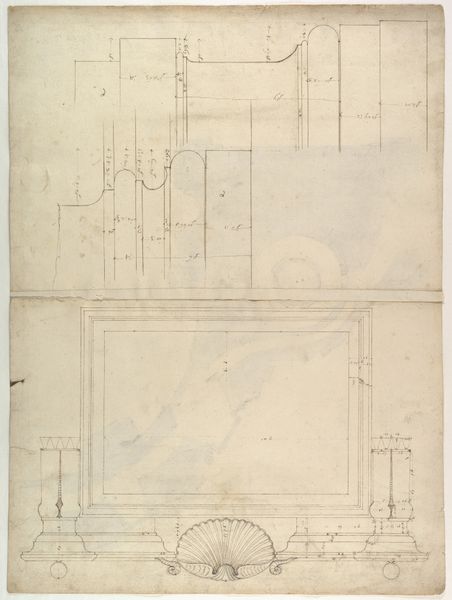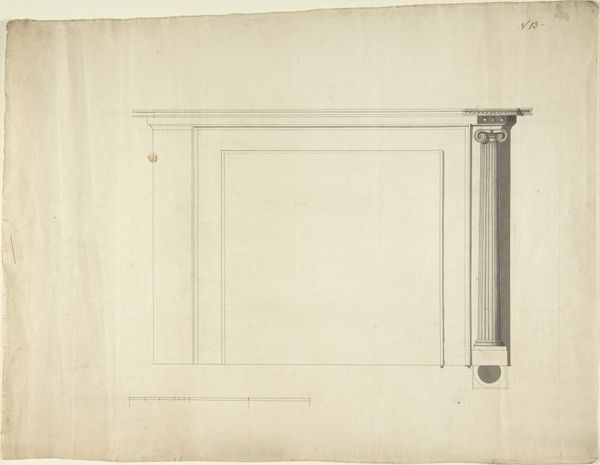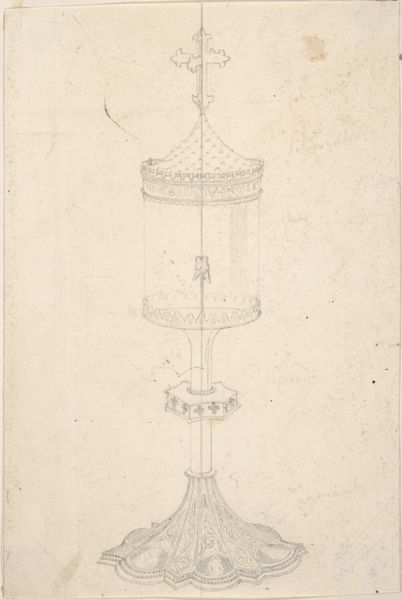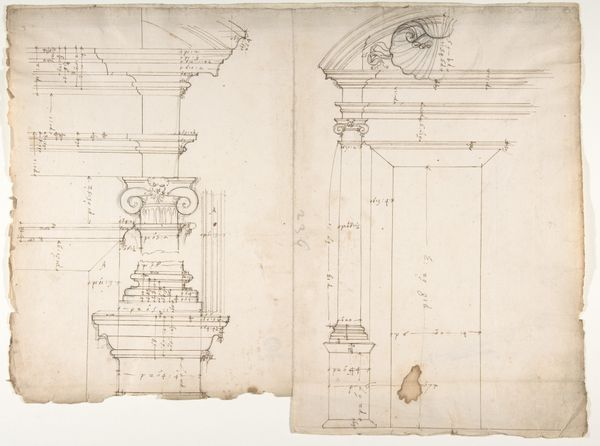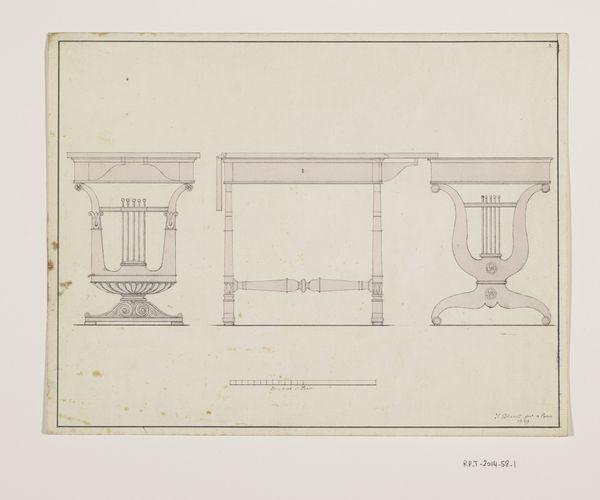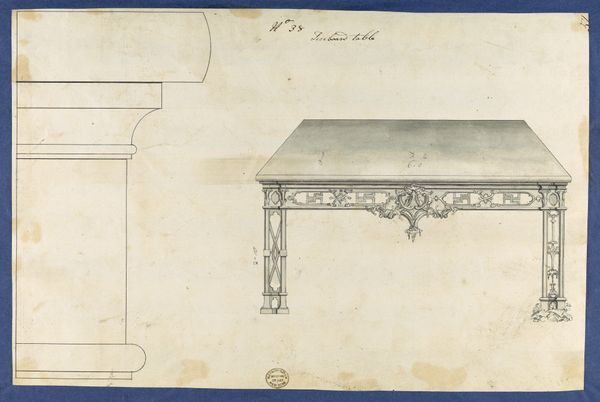
Design for a Machine to Raise and Lower Machinery 1800 - 1900
0:00
0:00
drawing, print, pencil
#
drawing
# print
#
hand drawn type
#
geometric
#
pencil
Dimensions: 8 1/4 x 8 3/4 in. (21.0 x 22.2 cm)
Copyright: Public Domain
Curator: Here we have "Design for a Machine to Raise and Lower Machinery," a drawing with pencil made sometime between 1800 and 1900, currently residing at the Metropolitan Museum of Art. What’s your initial take? Editor: My immediate impression is of precision tempered by delicacy. It feels both mechanical and deeply human, like a watchmaker's dream sketched on parchment. There’s a certain elegance despite the industrial subject matter. Curator: That blend is quite intentional, I believe. Engineering drawings from this period often reflected the aesthetics of Neoclassicism and Romanticism. Even a design for raising and lowering machinery would reference classical motifs like those ornamental urns on plinths depicted here. It also showcases an emerging world order—one powered by design. Editor: Those urns really stand out. What a curious element. Do you see those as purely decorative? It strikes me that placing the urns might imbue the machinery with symbolic meaning, suggesting themes of lifting, elevation, or even aspiration – literally and figuratively raising something to a higher plane. The power of visual vocabulary… Curator: Absolutely. While on the surface, these details appear decorative, they served to legitimize industrial innovation within the existing social framework. If a machine resembled established, admired forms, it was perceived as less disruptive to the social order. But perhaps there’s something else, too: the persistent urge to make utilitarian objects beautiful, imbued with layers of symbolism. Editor: And that combination, that push and pull between raw functionality and ornamented idealism, feels so incredibly telling of the era. It’s a fascinating artifact of technological aspiration attempting to negotiate with existing structures. You know, as an object of artistry in itself. It asks us to see beauty not just in ornament but also in invention and engineering and also to acknowledge and not turn our face away from what it obscures! Curator: It really prompts us to consider how technology embeds itself into culture, becoming intertwined with existing aesthetics and ideologies. Fascinating, indeed!
Comments
No comments
Be the first to comment and join the conversation on the ultimate creative platform.
